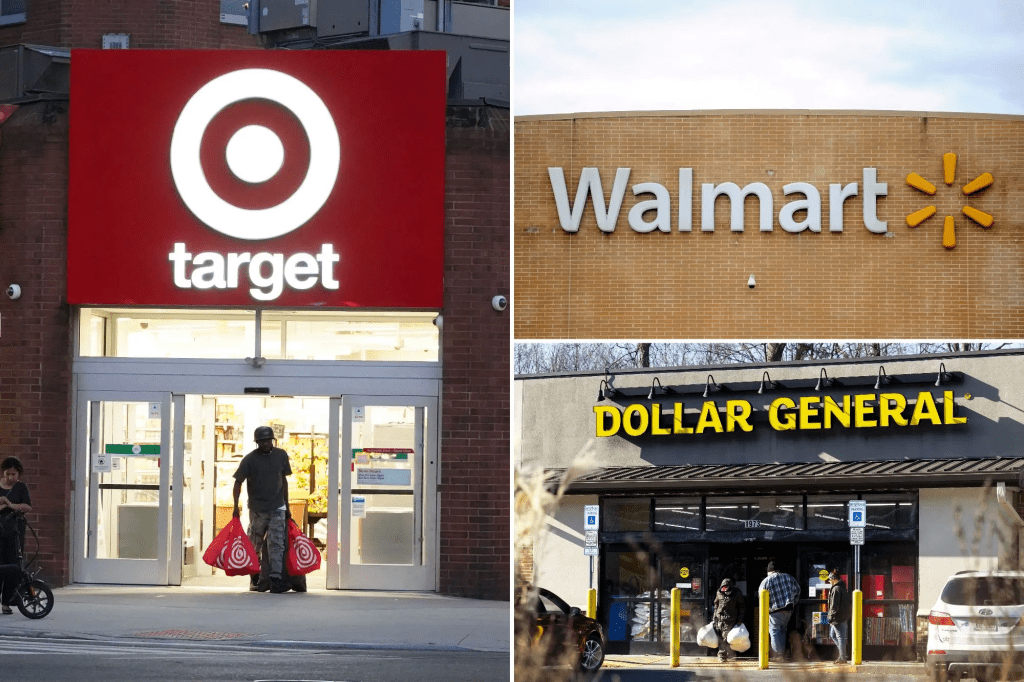In a world where we’ve come to rely on the convenience and comfort of pre-packaged snacks, the recent salmonella recall involving popular candy and confectionary items from retailers like Walmart, Target, and Dollar General has left a bitter taste in the mouths of consumers nationwide. What should have been a simple indulgence has now been tainted by the specter of a potentially deadly foodborne illness, shattering the illusion of safety we’ve come to associate with our favorite sugary treats.

The recalled products (not pictured) included coated pretzel rods that were sold at Target, Walmart and other stores. Getty Images
As the details of this alarming recall unfold, we find ourselves grappling with a sobering reality: the very products we’ve entrusted to satisfy our cravings could also be the vehicles for serious, and in some cases, life-threatening, health consequences. From pretzels to cookies and beyond, the scope of this contamination has sent shockwaves through an industry long seen as a bastion of childhood joy and adult indulgence.
In the face of this candy-coated chaos, we must confront the unsettling questions that have been raised: How did this happen? What are the potential ramifications for the public’s health and trust? And most importantly, what can we do to ensure the safety of the snacks we consume?
The recent recall announcement from the FDA has painted a troubling picture of the situation at hand. Palmer Candy Company, a prominent manufacturer based in Sioux City, Iowa, has issued a recall for its “White Coated Confectionary Items,” citing the potential for contamination with the dreaded Salmonella bacteria.
Salmonella, as many of us know, is a formidable foe – an organism capable of causing serious and sometimes fatal infections, particularly in vulnerable populations such as young children, the elderly, and those with compromised immune systems. The fact that this recall has been classified as a “Class I” – the highest risk level – only underscores the gravity of the situation.
What’s particularly disconcerting is that the contamination appears to have stemmed from an ingredient supplied to Palmer Candy, a sobering reminder that the safety of our food supply is often subject to a complex web of interconnected processes and suppliers. This revelation has left many consumers questioning the reliability of the systems in place to protect the integrity of the products we bring into our homes.
As the details of this recall unfold, it has become increasingly clear that the reach of this salmonella scare extends far beyond a single manufacturer or brand. The FDA’s announcement has revealed that the affected products were sold at a vast network of retailers across the United States, including household names like Walmart, Target, and Dollar General.

This expansive distribution has only served to amplify the public’s concerns, as families from coast to coast now find themselves scrutinizing their pantry shelves and snack drawers, wondering if the very items they’ve been consuming with reckless abandon could be harboring a potentially deadly contaminant.
Adding to the unease is the news that these contaminated confections were also sold through a wide range of distributors, spanning numerous states from Alabama to Wyoming. The sheer scale of this recall underscores the interconnectedness of our modern food system, and the sobering reality that a single point of failure can have widespread and devastating consequences.
As if the scope of this recall wasn’t unsettling enough, the specter of Salmonella poisoning looms large over the affected consumers. Salmonella, a common but potentially deadly bacterial infection, can wreak havoc on the human body, causing a range of gastrointestinal distress, from diarrhea and stomach cramps to more severe complications like dehydration.
While the FDA has reported that there have been no known illnesses or injuries linked to the recalled products thus far, the potential for serious health consequences remains. Salmonellosis, as the infection is known, can be particularly dangerous for vulnerable populations, including young children, the elderly, and those with compromised immune systems.

The stakes are high, as the ramifications of Salmonella poisoning can be far-reaching and long-lasting. Victims may find themselves battling debilitating symptoms for days or even weeks, and in severe cases, the infection can lead to life-threatening complications. The prospect of such an outcome, especially for the most vulnerable members of our communities, only adds to the urgency of this situation.
As the fallout from this salmonella scare continues to reverberate across the nation, it has become clear that the candy and confectionary industry, as well as the broader food system, must take a long, hard look at the practices and protocols that led to this breakdown in safety.
The onus falls not only on the manufacturer at the heart of the recall, but also on the regulatory bodies and supply chain partners tasked with ensuring the integrity of our food supply. Consumers deserve transparency, accountability, and the confidence that the treats they enjoy are free from the threat of contamination and illness.
Moving forward, it will be crucial for industry leaders to collaborate with government agencies, researchers, and consumer advocates to implement robust safety measures, enhance traceability, and strengthen the overall resilience of the system. Only through a holistic, proactive approach can we begin to restore the public’s trust in the candy aisle and beyond.

The salmonella scare that has engulfed the nation’s snack aisles is a sobering reminder that the comfort and convenience we associate with our favorite confections can be shattered in an instant. This recall has exposed the fragility of our food system and the need for sweeping changes to safeguard the health and wellbeing of consumers.
As we grapple with the implications of this crisis, it is essential that we approach the situation with a clear-eyed understanding of the challenges at hand. The potential for serious illness, the disruption to our daily routines, and the erosion of trust in an industry once seen as a bastion of indulgence – all of these factors must be confronted head-on.
Yet, in the face of this candy-coated chaos, there is an opportunity for transformation. By demanding greater transparency, accountability, and proactive safety measures from the industry, we can work to ensure that the snacks we love are not only delectable, but also unequivocally safe. It is a reckoning that will require the collective effort of regulators, manufacturers, and consumers alike, but the stakes are too high to settle for anything less.
In the end, the salmonella scare is a bitter pill to swallow, but it also serves as a wake-up call – a clarion cry for vigilance and change. As we move forward, let us be ever-mindful of the fragility of our food systems and the responsibility we all share in safeguarding the health and wellbeing of our communities. Only then can we truly enjoy the sweetness of our favorite treats without the looming specter of danger.


